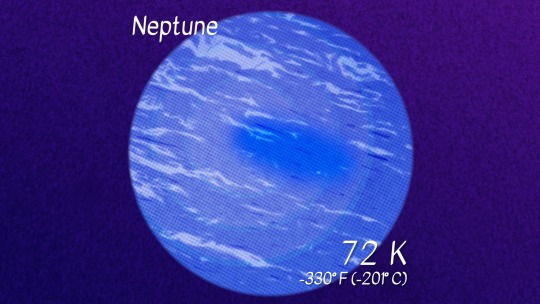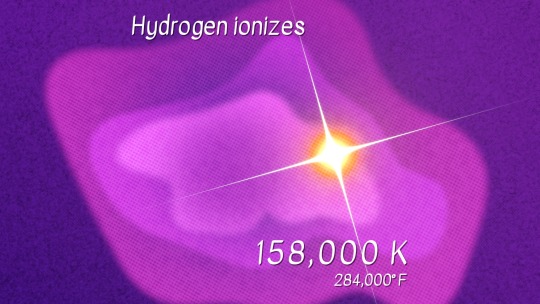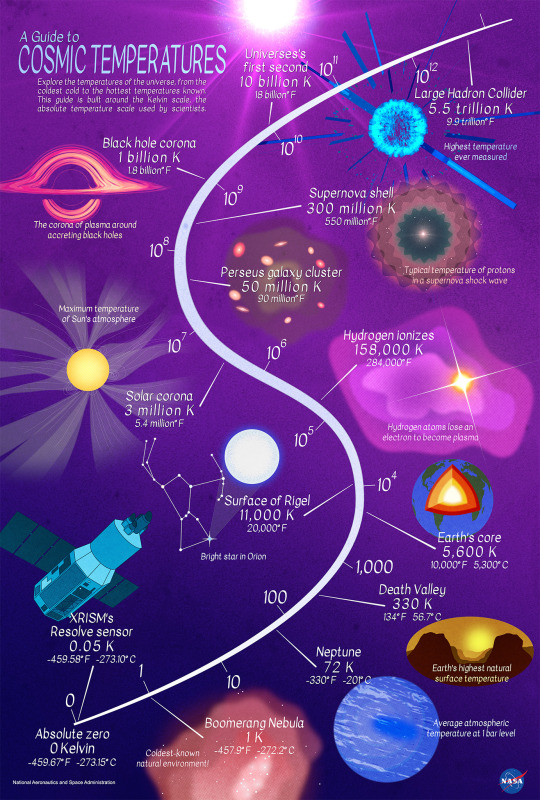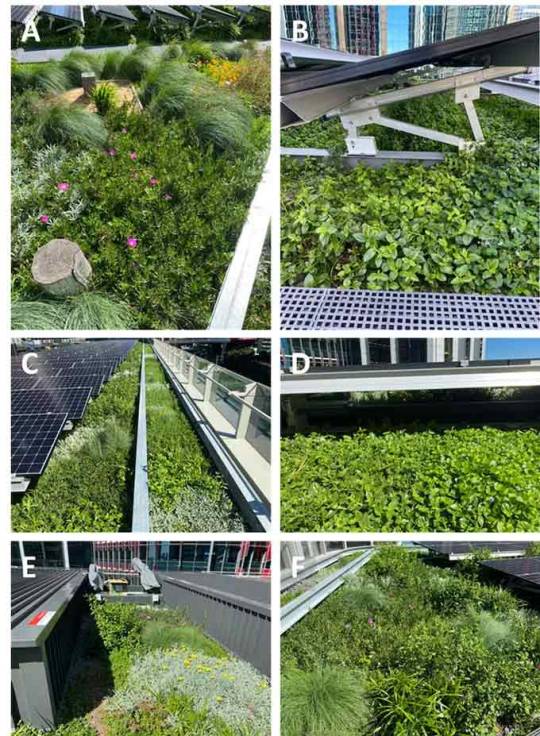#TEMPERATURE
Explore tagged Tumblr posts
Text
For example, your AC/heating keeps your home at 70ºF/21ºC; you walk outside and it's also 70ºF/21ºC. Does it feel like outside is warmer or colder than it was inside?
–
We ask your questions anonymously so you don’t have to! Submissions are open on the 1st and 15th of the month.
#polls#incognito polls#anonymous#tumblr polls#tumblr users#questions#polls about the home#submitted july 10#miscellaneous polls#weather#temperature#senses
134 notes
·
View notes
Photo

New Zealand's average monthly temperature anomalies in 2024.
41 notes
·
View notes
Text

In my new scale, °X, 0 is Earths' record lowest surface temperature, 50 is the global average, and 100 is the record highest, with a linear scale between each point and adjustment every year as needed.
Temperature Scales [Explained]
Transcript Under the Cut
Temperature Scales
[A table with five columns, labelled: Unit, water freezing point, water boiling point, notes, cursedness. There are eleven rows below the labels.]
[Row 1:] Celsius, 0, 100, Used in most of the world, 2/10 [Row 2:] Kelvin, 273.15, 373.15, 0K is absolute zero, 2/10 [Row 3:] Fahrenheit, 32, 212, Outdoors in most places is between 0–100, 3/10 [Row 4:] Réaumur, 0, 80, Like Celsius, but with 80 instead of 100, 3/8 [Row 5:] Rømer, 7.5, 60, Fahrenheit precursor with similarly random design, 4/10, [Row 6:] Rankine, 491.7, 671.7, Fahrenheit, but with 0°F set to absolute zero, 6/10 [Row 7:] Newton, 0, 33-ish, Poorly defined, with reference points like "the hottest water you can hold your hand in", 7-ish/10 [Row 8:] Wedgewood, –8, –6.7, Intended for comparing the melting points of metals, all of which it was very wrong about, 9/10 [Row 9:] Galen, –4?, 4??, Runs from –4 (cold) to 4 (hot). 0 is "normal"(?), 4/–4 [Row 10:] ''Real'' Celsius, 100, 0, In Anders Celsius's original specification, bigger numbers are ''colder''; others later flipped it, 10/0 [Row 11:] Dalton, 0, 100, A nonlinear scale; 0°C and 100°C are 0 and 100 Dalton, but 50°C is 53.9 Dalton, 53.9/50
4K notes
·
View notes
Text
People who have regular body heat don't experience cold the way we do. They apparently have this little heater inside of them that just, keeps their blood and internal organs comfy all the time. Being "cold" to them is just a chill on their skin. "If you're still cold after the first layer, put another layer on!" That doesn't work if you don't have the body heat to warm up those layers!!! it's just cold fabric on top of cold fabric on top of cold fabric on top of cold skin on top of cold fat on top of cold muscle on top of cold bones.
Then of course, even if there are FINALLY enough layers to make our skin warm. That does not mean it will make our bones warm. I could have an electronically heated blanket on me, and start sweating from it, and STILL BE COLD because it takes a lot of time for any amount of heat to pierce the surface level of my body & warm me in any ways that matter. So yeah, anytime you're interacting with somebody who doesn't have temperature regulation issues, and they offhandedly mention that they love the cold, just be aware they are never ever talking about our kind of cold. the kind that feels like an uphill battle. They're talking about something completely different and unique to them and their little internal heater. something some of us may never experience because we're always trapped in that fight with the air around us.
#chronic illness#chronically ill#chronic fatigue#temperature regulation#temperature#cold#invisible disability#invisible illness#disabled#disabilities#disability#cripple punk#crip punk#angry cripple#fuck ableists#actually disabled#chronic disability#cripplepunk
2K notes
·
View notes
Text
A Tour of Cosmic Temperatures
We often think of space as “cold,” but its temperature can vary enormously depending on where you visit. If the difference between summer and winter on Earth feels extreme, imagine the range of temperatures between the coldest and hottest places in the universe — it’s trillions of degrees! So let’s take a tour of cosmic temperatures … from the coldest spots to the hottest temperatures yet achieved.
First, a little vocabulary: Astronomers use the Kelvin temperature scale, which is represented by the symbol K. Going up by 1 K is the same as going up 1°C, but the scale begins at 0 K, or -273°C, which is also called absolute zero. This is the temperature where the atoms in stuff stop moving. We’ll measure our temperatures in this tour in kelvins, but also convert them to make them more familiar!
We’ll start on the chilly end of the scale with our CAL (Cold Atom Lab) on the International Space Station, which can chill atoms to within one ten billionth of a degree above 0 K, just a fraction above absolute zero.

Credit: NASA's Goddard Space Flight Center/Scott Wiessinger
Just slightly warmer is the Resolve sensor inside XRISM, pronounced “crism,” short for the X-ray Imaging and Spectroscopy Mission. This is an international collaboration led by JAXA (Japan Aerospace Exploration Agency) with NASA and ESA (European Space Agency). Resolve operates at one twentieth of a degree above 0 K. Why? To measure the heat from individual X-rays striking its 36 pixels!

Credit: NASA's Goddard Space Flight Center/Scott Wiessinger
Resolve and CAL are both colder than the Boomerang Nebula, the coldest known region in the cosmos at just 1 K! This cloud of dust and gas left over from a Sun-like star is about 5,000 light-years from Earth. Scientists are studying why it’s colder than the natural background temperature of deep space.

Credit: NASA's Goddard Space Flight Center/Scott Wiessinger
Let’s talk about some temperatures closer to home. Icy gas giant Neptune is the coldest major planet. It has an average temperature of 72 K at the height in its atmosphere where the pressure is equivalent to sea level on Earth. Explore how that compares to other objects in our solar system!

Credit: NASA's Goddard Space Flight Center/Scott Wiessinger
How about Earth? According to NOAA, Death Valley set the world’s surface air temperature record on July 10, 1913. This record of 330 K has yet to be broken — but recent heat waves have come close. (If you’re curious about the coldest temperature measured on Earth, that’d be 183.95 K (-128.6°F or -89.2°C) at Vostok Station, Antarctica, on July 21, 1983.)
We monitor Earth's global average temperature to understand how our planet is changing due to human activities. Last year, 2023, was the warmest year on our record, which stretches back to 1880.

Credit: NASA's Goddard Space Flight Center/Scott Wiessinger
The inside of our planet is even hotter. Earth’s inner core is a solid sphere made of iron and nickel that’s about 759 miles (1,221 kilometers) in radius. It reaches temperatures up to 5,600 K.

Credit: NASA's Goddard Space Flight Center/Scott Wiessinger
We might assume stars would be much hotter than our planet, but the surface of Rigel is only about twice the temperature of Earth’s core at 11,000 K. Rigel is a young, blue star in the constellation Orion, and one of the brightest stars in our night sky.

Credit: NASA's Goddard Space Flight Center/Scott Wiessinger
We study temperatures on large and small scales. The electrons in hydrogen, the most abundant element in the universe, can be stripped away from their atoms in a process called ionization at a temperature around 158,000 K. When these electrons join back up with ionized atoms, light is produced. Ionization is what makes some clouds of gas and dust, like the Orion Nebula, glow.

Credit: NASA's Goddard Space Flight Center/Scott Wiessinger
We already talked about the temperature on a star’s surface, but the material surrounding a star gets much, much hotter! Our Sun’s surface is about 5,800 K (10,000°F or 5,500°C), but the outermost layer of the solar atmosphere, called the corona, can reach millions of kelvins.
Our Parker Solar Probe became the first spacecraft to fly through the corona in 2021, helping us answer questions like why it is so much hotter than the Sun's surface. This is one of the mysteries of the Sun that solar scientists have been trying to figure out for years.

Credit: NASA's Goddard Space Flight Center/Scott Wiessinger
Looking for a hotter spot? Located about 240 million light-years away, the Perseus galaxy cluster contains thousands of galaxies. It’s surrounded by a vast cloud of gas heated up to tens of millions of kelvins that glows in X-ray light. Our telescopes found a giant wave rolling through this cluster’s hot gas, likely due to a smaller cluster grazing it billions of years ago.

Credit: NASA's Goddard Space Flight Center/Scott Wiessinger
Now things are really starting to heat up! When massive stars — ones with eight times the mass of our Sun or more — run out of fuel, they put on a show. On their way to becoming black holes or neutron stars, these stars will shed their outer layers in a supernova explosion. These layers can reach temperatures of 300 million K!

Credit: NASA's Goddard Space Flight Center/Jeremy Schnittman
We couldn’t explore cosmic temperatures without talking about black holes. When stuff gets too close to a black hole, it can become part of a hot, orbiting debris disk with a conical corona swirling above it. As the material churns, it heats up and emits light, making it glow. This hot environment, which can reach temperatures of a billion kelvins, helps us find and study black holes even though they don’t emit light themselves.
JAXA’s XRISM telescope, which we mentioned at the start of our tour, uses its supercool Resolve detector to explore the scorching conditions around these intriguing, extreme objects.

Credit: NASA's Goddard Space Flight Center/CI Lab
Our universe’s origins are even hotter. Just one second after the big bang, our tiny, baby universe consisted of an extremely hot — around 10 billion K — “soup” of light and particles. It had to cool for a few minutes before the first elements could form. The oldest light we can see, the cosmic microwave background, is from about 380,000 years after the big bang, and shows us the heat left over from these earlier moments.

Credit: NASA's Goddard Space Flight Center/Scott Wiessinger
We’ve ventured far in distance and time … but the final spot on our temperature adventure is back on Earth! Scientists use the Large Hadron Collider at CERN to smash teensy particles together at superspeeds to simulate the conditions of the early universe. In 2012, they generated a plasma that was over 5 trillion K, setting a world record for the highest human-made temperature.
Want this tour as a poster? You can download it here in a vertical or horizontal version!

Credit: NASA's Goddard Space Flight Center/Scott Wiessinger
Explore the wonderful and weird cosmos with NASA Universe on X, Facebook, and Instagram. And make sure to follow us on Tumblr for your regular dose of space!
2K notes
·
View notes
Note
Any fancy temperature words? Like replacements for hot, cold and whatever in between
Algid - cold
Arctic - bitter cold
Ardent - fiery, hot
Balmy - mild, temperate
Blazing - of outstanding power, speed, heat, or intensity
Calenture - a fever formerly supposed to affect sailors in the tropics
Cryogenic - being or relating to very low temperatures
Decalescence - the decrease in temperature when the rate of heat absorption during transformation exceeds the rate of heat input while heating metal through a transformation range
Febrile - marked or caused by fever; feverish
Febrility - feverishness
Fervent - very hot; glowing
Fervid - very hot; burning
Frigid - intensely cold
Frore - frosty, frozen
Frosty - briskly cold; chilly
Gelid - extremely cold; icy
Glacial - extremely cold
Hibernal - of, relating to, or occurring in winter
Hyperthermic - exceptionally high fever especially when induced artificially for therapeutic purposes
Hypothermic - subnormal temperature of the body
Igneous - of, relating to, or resembling fire; fiery
Lukewarm - moderately warm; tepid
Molten - having warmth or brilliance
Pyrexia - abnormal elevation of body temperature; fever
Recalescence - the increase in temperature when the rate of heat liberation during transformation exceeds the rate of heat dissipation while cooling metal through a transformation range
Rigorous - marked by extremes of temperature or climate
Rime - frost
Scalding - hot enough to scald
Searing - very hot
Steamy - hot and humid
Tepid - moderately warm; lukewarm
Thermogenic - relating to, caused by, or inducing the production of heat
Torrid - giving off intense heat; scorching
Wintry - of, relating to, or characteristic of winter; chilly
Xerothermic - characterized by heat and dryness
Hope this helps with your writing. Do tag me, or send me a link. I'd love to read your work!
More: Word Lists
#anonymous#word list#temperature#writeblr#spilled ink#dark academia#writing prompt#poetry#poets on tumblr#writers on tumblr#literature#writing inspiration#creative writing#writing ideas#nature#writing tips#writing inspo#writing reference#langblr#linguistics#writing resources
1K notes
·
View notes
Text
"As solar panels heat up beyond 25°C, their efficiency decreases markedly. Green roofs moderate rooftop temperatures. So we wanted to find out: could green roofs help with the problem of heat reducing the output of solar panels?
Our research compared a “biosolar” green roof — one that combines a solar system with a green roof — and a comparable conventional roof with an equivalent solar system. We measured the impacts on biodiversity and solar output, as well as how the plants coped with having panels installed above them.
The green roof supported much more biodiversity, as one might expect. By reducing average maximum temperatures by about 8°C, it increased solar generation by as much as 107% during peak periods. And while some plant species outperformed others, the vegetation flourished.
These results show we don’t have to choose between a green roof or a solar roof: we can combine the two and reap double the rewards...
How did the panels affect the plants?
In the open areas, we observed minimal changes in the vegetation cover over the study period compared to the initial planted community.
Plant growth was fastest and healthiest in the areas immediately around the solar panels. Several species doubled in coverage. We selected fast-growing vegetation for this section to achieve full coverage of the green roof beds as soon as possible.
The vegetation changed the most in the areas directly below and surrounding the solar panels. The Baby Sun Rose, Aptenia cordifolia, emerged as the dominant plant. It occupied most of the space beneath and surrounding the solar panels, despite having been planted in relatively low densities.
This was surprising: it was not expected the plants would prefer the shaded areas under the panels to the open areas. This shows that shading by solar panels will not prevent the growth of full and healthy roof gardens.

What were the biodiversity impacts?
We used environmental DNA (eDNA) surveys to compare biodiversity on the green roof and conventional roof. Water run-off samples were collected from both roofs and processed on site using portable citizen scientist eDNA sampling equipment to detect traces of DNA shed by the species on the roof.
The eDNA surveys detected a diverse range of species. These included some species (such as algae and fungi) that are not easily detected using other survey methods. The results confirmed the presence of bird species recorded by the cameras but also showed other visiting bird species went undetected by the cameras.
Overall, the green roof supported four times as many species of birds, over seven times as many arthropods such as insects, spiders and millipedes, and twice as many snail and slug species as the conventional roof. There was many times the diversity of microorganisms such as algae and fungi.
Encouragingly, the green roof attracted species unexpected in the city. They included blue-banded bees (Amegilla cingulata) and metallic shield bugs (Scutiphora pedicellata).
How did the green roof alter temperatures?
The green roof reduced surface temperatures by up to 9.63°C for the solar panels and 6.93°C for the roof surfaces. An 8°C reduction in average peak temperature on the green roof would result in substantial heating and cooling energy savings inside the building.
This lowering of temperatures increased the maximum output of the solar panels by 21-107%, depending on the month. Performance modelling indicates an extensive green roof in central Sydney can, on average, produce 4.5% more electricity at any given light level.
These results show we don’t have to choose between a green roof or a solar roof. We can combine them to take advantage of the many benefits of biosolar green roofs.
Biosolar roofs can help get cities to net zero
The next step is to design green roofs and their plantings specifically to enhance biodiversity. Green roofs and other green infrastructure may alter urban wildlife’s activities and could eventually attract non-urban species.
Our green roof also decreased stormwater runoff, removed a range of run-off pollutants and insulated the building from extremes of temperature. A relatively inexpensive system provides all of these services with moderate maintenance and, best of all, zero energy inputs.
Clearly, biosolar green roofs could make major contributions to net-zero cities. And all that’s needed is space that currently has no other use."
-via GoodGoodGood, May 12, 2024
#green#green roof#biosolar#solar power#solar panels#rooftop solar#solarpunk#native plants#australia#sydney australia#biodiversity#conservation#climate change#climate action#climate hope#global warming#temperature#climate adaptation#cooling#good news#hope
2K notes
·
View notes
Text
MEMORY, MEMORIES, DATA & EPHEMERA..



I have been playing with casting a bit again. Repetition is a vehicle of process, especially with making art..
How many dimensions do our human memories have?
This frozen 3-dimensional cast of an old outdated hard drive is co-dependent on a specific temperature to exist physically. The temperature determines its longevity in the 4th dimension of “time”.
The images that you see here are 2-dimensional and will easily out live the 3D & 4D version mentioned above.
If we can see our personal memories as data, we know that they are stored, triggered and accessible via our thoughts and emotions, unlike the metaphor of a hard-drive that is not sentient… yet.
But that day will perhaps come, when technology will know how to develop and deploy emotions to data..
But if the temperature changes…
1K notes
·
View notes
Text
humans are weird (body temp)
what if humans are the only species that could live in below zero and above 100 ° weather (Fahrenheit)
id like to think that aliens live in colder weather and they’re body NEEDS the temp only a few degrees around their body temp so whenever they hear about a human living in 90° weather AND that their average body temp is 97-99 they’d freak out, and I think they’d also be surprised that our muscle rapidly contract and relax to keep our body temperature near the 97-98 range when we’re cold
•——————————————————————• A:hey human.. why are you shaking?
H:hm? Oh it cuz y’all got it freezing in here
A: that… still doesn’t explain why you are shaking. Don’t you live in cold temperatures?
H:some of us do but it cools our body down so our muscles rapidly relax and contract to kinda keep our body temperature around 98 ish degrees
A:98?! HUMAN THATS ALMOST HALFWAY TO BOILING, HOW CAN YOU SURVIVE THAT
H:idk
A: •-•
250 notes
·
View notes
Text

276 notes
·
View notes
Text
We ask your questions so you don’t have to! Submit your questions to have them posted anonymously as polls.
#polls#incognito polls#anonymous#tumblr polls#tumblr users#questions#miscellaneous polls#submitted june 24#temperature#senses#weather#heat#hot weather
3K notes
·
View notes
Text
Temperature.
#art#artists on tumblr#design#pi-slices#animation#abstract#trippy#loop#temperature#glass#3d#c4d#octane#surreal#aesthetic
337 notes
·
View notes
Photo

Chances for excessive summer temperatures
521 notes
·
View notes
Note
Recipes often say medium or high for stove temps, but I know different stoves have different temp ranges (the 5 setting on my stove is way different than the one on my parents' stove). Is there a better way to figure out where my stove's 'medium' is than trial and error? (Also if the answer is a thermometer, how do i use the thermometer to figure it out? I doubt poking it against the heating element would be the right method)
Do not poke the heating element.
Your 'Medium' will be the halfway point between 'Low' and 'High'.
It's just how aggressively heat is pumping out, relative to itself.
Because your pan will be losing heat at the same time the stovetop is adding heat, and you'll also lose heat faster if you're constantly stirring the ingredients around, the actual live temp in the pan will vary greatly.
When cooking, you're trying to set the dial for 'Hot enough to get your food to do the reaction you want in the timeframe you want, without cooling too fast or burning)
'High' (numbers 7-9 if your stove has numbers instead of words) is at the top third. 'Medium' (4-6) is in the middle, 'Low' (1-3) is at the bottom third.

The thing is; your stovetop can boil water at nearly every mode. Even at a 3, or 'low' it can keep water at a gentle boil if you leave it alone with the lid on.
The stovetop assumes you'll be COOKING with it if it's on- which means moving the stuff around, moving the pan around, adding cool ingredients - all of which will COOL DOWN the pan.
You can burn something on a LOW heat pan if you leave it alone. Heat builds up and isn't released, steams out all the water, and then turns the dry matter into char.
You can NOT burn something on HIGH heat pan if you move it around enough.
--
Most regular stove-top things are cooked on Medium heat.
You might go up to HIGH if you want to sear the outside, but after it's seared you turn the heat back down.
You might stay on low if you have a delicate sauce or you're just re-heating something that's already cooked, or you've already seared the outside and now want to maintain juuuuust enough heat to finish cooking throughout.
-- In conclusion:
PAY ATTENTION TO WHAT THE FOOD IS DOING IN THE PAN.
If a recipe says "cook for 20 minutes or until golden brown', then take it OFF THE HEAT when it's golden brown, even if only 17 mins have passed.
If a recipe says 'Turn the heat down to medium to reduce it to a simmer' and your pot stays at a ROLLING BOIL, then you need to turn it down a bit further, or take the pan off the heat entirely to get it to gentle to a simmer.
Aim for the goal of that cooking step. Read the recipe and ask questions so you understand WHY each step needs to happen BEFORE YOU START COOKING
Learn how your own equipment behaves. Does it run too hot? Does it heat unevenly? Pay attention to what's going on with your food when cooking! Yes, you may make mistakes, but learn from those mistakes. Either learn about food or learn about your equipment.
Recipes are written by people who are using THEIR OWN equipment. Every recipe was written by a PERSON. Some people have funky stovetops that run way hotter or cooler than average. Their recipe will always assume that your stove is exactly like theirs.
If you KNOW that your stovetop tends to burn things when you follow the recipe exactly, remember to tweak the knob a little lower, so the temp isn't as intense
161 notes
·
View notes
Text

Confirmed: Summer 2023 Hottest in NASA’s Record
All three months of summer 2023 broke records. July 2023 was the hottest month ever recorded, and the hottest July. June 2023 was the hottest June, and August 2023 was the hottest August.
NASA’s temperature record, GISTEMP, starts in 1880, when consistent, modern recordkeeping became possible. Our record uses millions of measurements of surface temperature from weather stations, ships and ocean buoys, and Antarctic research stations. Other agencies and organizations who keep similar global temperature records find the same pattern of long-term warming.
Global temperatures are rising from increased emissions of greenhouse gasses, like carbon dioxide and methane. Over the last 200 years, humans have raised atmospheric CO2 by nearly 50%, primarily through the burning of fossil fuels.
Drivers of climate change, both natural and human-caused, leave distinct fingerprints. Through observations and modeling, NASA researchers confirm that the current warming is the result of human activities, particularly increased greenhouse gas emissions.
6K notes
·
View notes